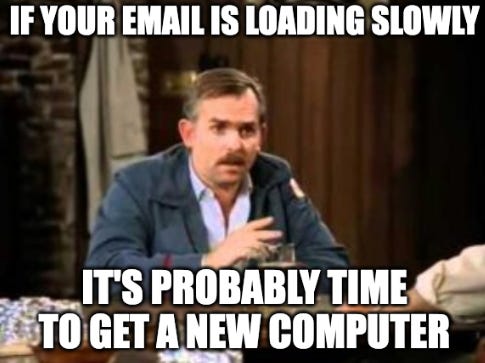IX - The Strength of "I Don't Know"

When I was growing up, there was a popular show on TV that took place in a bar. All the patrons frequenting the bar came from different lines of work; accountants, professional athletes, psychiatrists, and postal delivery people among others. It was a place where everybody knew everybody’s name. And all problems were resolved in 22 minutes with commercials.
One of the patrons in this bar seemed to know information about everything. On many occasions this person would smugly unload facts and information based on the day’s conversation topics. The only problem was… this person was wrong most of the time.
In my early years as a Technology Support Professional (TSP), I wanted to appear competent with my customers and my IT peers. Looking back, I placed a great deal of pressure on myself to know everything about everything. It was an unnecessary mindset. No TSP knows everything about technology, and experience has shown me that no one knows everything even in their field of expertise; there always is something still to be learned. Perhaps we have the Google search engine, and its immediate results, to blame for an unreachable standard when it comes to our mind’s capacity for storing knowledge.
On many occasions, my client would share their tech problem and ask me why it was happening. When I didn’t know the answer to their issue, I could have responded with:
Other than not having the latest OS updates installed, your hard drive needs to be defragged to bring the CPU utilization back to normal functionality. Plus the onboard RAM is segmented too much for the BIOS which is causing your CMOS to have latency issues. Once we swap out your GPU for a new one, that .dll error message you’re getting will stop happening.
or with this:
I appreciate you showing how you keep getting that .dll error popup message. I don’t know what is causing your issue, but I’m going back to my office to research how I can fix this, and I’ll give you a call back this afternoon with an update on my progress.
If I responded the first way, with uber-nerdy tech-speak to obfuscate and confuse my client, it might buy me some time. It might continue my intentions to appear smarter than them. But I could never go this route. I couldn’t risk a client calling my bluff with my misinformation. Not only would I be lying to them, I might get in trouble with my supervisors for telling lies.
Choosing to tell my client “I don’t know” was one of the toughest things I ever had to do as a TSP. I viewed it as an admission that I didn’t know everything. I viewed it as weakness. After all, none of my IT peers ever said I don’t know. But looking back, a lot of my IT peers were socially awkward, and not many were confident enough to risk being genuine or ~gasp~ vulnerable in the workplace. Nerds gonna be nerdy.
Everything changed for me in the mid-2000s when I visited a client in their office. They were at their wit’s end as they showed me what was going wrong with their computer. Believe me, it was a whang-do of an error! I had no clue why this was happening to them, so I shoved my ego aside and gave them my second explanation. Not only did my client’s tense face relax, they actually thanked me for researching their problem. On the rare occasions where I didn’t find a solution back at my office, I’d call them back with an afternoon update as promised and would say something like:
I haven’t found a solution to your error popup, but I’m still researching your issue. This is a tough one! I will check in with you tomorrow morning before lunch. I appreciate your patience during this time.
…showed my client I took ownership of their situation, partnered with them in this technology annoyance, and gave them another timeline for when they’d hear from me. As I continued to choose "I don’t know” when an unfamiliar issue came up for my customers, I received similar appreciative responses and appreciation from them.
It’s tough to disengage with the standards we set for ourselves, but once we do it becomes easier and easier. Doing more repetitions with honesty and genuine humbleness builds strength. Not in a bulging arms way from bicep curls, but in a professional integrity way. Your clients will view you as reliable and honest. Plus, you won’t have to keep track of all the confusing and incorrect information you share with clients.


